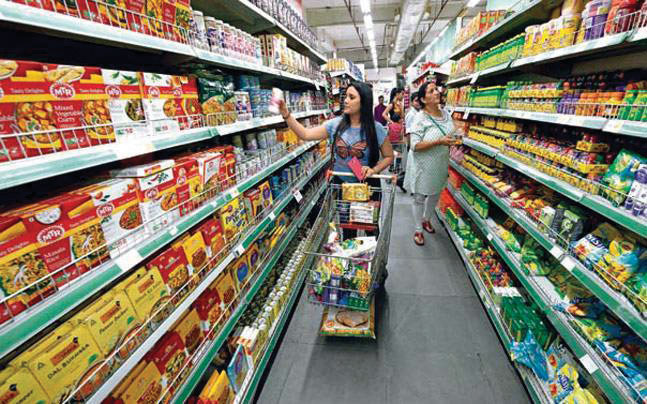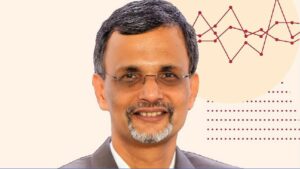By Jiten Parmar
The new tax regime Goods and Services Tax (GST) will create a national market, enhance ease of doing business and improve tax compliance and it will lower the overall tax burden on consumers. It has subsumed a large number of central and state taxes into a single tax, paving the way for a common national market. It is estimated that GST could raise GDP by 1.5-2 per cent in the long term. Jiten Parmar explains the finer points.
The idea of GST in the country was floated by the Atal Behari Vajpayee regime in 2000. The government had set up an empowered committee headed by the then West Bengal Finance Minister, Asim Dasgupta. Later in 2003, Kelkar Task Force was set up under Vijay L Kelkar which prepared a Report on Roadmap for Fiscal Consolidation. GST was first mentioned in the Budget Speech in the financial year of 2006-07 and an Empowered Committee of State Finance Ministers (EC) was set up. In April, 2008, the EC gave a report titled “A Model and Roadmap for Goods and Services Tax (GST) in India” containing broad recommendations about the structure and design of GST. The dual GST structure was proposed by this committee in 2010 and after that a Constitution Amendment Bill was introduced by the then Finance Minister Pranab Mukherjee on 22 March, 2011. He was closely involved in the design and implementation and had met the Empowered Committee of state finance ministers, formally and informally, as many as 16 times.
Many states opposed it, including the then Gujarat Chief Minister Narendra Modi, Kerala and Maharashtra (which had Congress CMs). The sticking point was compensation of loss of revenue and not agreeing to a range of issues.he idea of GST in the country was floated by the Atal Behari Vajpayee regime in 2000. The government had set up an empowered committee headed by the then West Bengal Finance Minister, Asim Dasgupta. Later in 2003, Kelkar Task Force was set up under Vijay L Kelkar which prepared a Report on Roadmap for Fiscal Consolidation. GST was first mentioned in the Budget Speech in the financial year of 2006-07 and an Empowered Committee of State Finance Ministers (EC) was set up. In April, 2008, the EC gave a report titled “A Model and Roadmap for Goods and Services Tax (GST) in India” containing broad recommendations about the structure and design of GST. The dual GST structure was proposed by this committee in 2010 and after that a Constitution Amendment Bill was introduced by the then Finance Minister Pranab Mukherjee on 22 March, 2011. He was closely involved in the design and implementation and had met the Empowered Committee of state finance ministers, formally and informally, as many as 16 times.
Modi government showed a will to implement and brought in a constitutional amendment bill on GST. The government negotiated with different state governments and, at last, GST Bill was approved by the Lok Sabha and Rajya Sabha on 8th September 2016. It became One Hundred and First Amendment Act. Subsequently, a GST Council was formed which has representation from the Centre and states.
GST Council
The objective of GST Council is to make recommendations on everything related to GST including laws, rules and rates, etc. Union Finance Minister Arun Jaitley heads the panel while ministers of finance or taxation of each state are its members. Decisions in the Council are taken by a 75% majority. Centre and a minimum of 20 States are required for the majority because Centre would have one-third weightage of the total votes cast and all the States taken together would have two-thirds of weightage. In fact Centrer has given its full command over Excise and Service Tax in favor of the GST and divested it’s power to the GST council, which is a very praiseworthy move. All decisions have been made unanimously.
GST rates on goods and services have been classified into broadly four tax rates: 5 per cent, 12 per cent, 18 per cent and 28 per cent. Some goods and services have been exempted. Precious metals like gold will attract a separate tax rate of 3 per cent. A cess will be levied over the peak rate of 28 per cent on specified luxury and sin goods. Alcohol, petroleum products such as petrol, diesel and aviation turbine fuel have been kept out of GST as of now. The GST Council will take a decision on it at a later date.
Businesses with an annual turnover of ` 20 lakh (` 10 lakh for special category states) would be exempt from GST. A composition scheme (to pay tax at a flat rate without input credits) is available to some businesses having an annual turnover of up to ` 75 lakh. The composition scheme is optional. Under GST, businesses are required to file returns each month. But the government has let companies file late returns for the first two months so that they can adapt to a new online filing system. This is the biggest tax reform in the history of India. It is a game-changer. Any big change does bring some disruption, but the transition has
been less disruptive.
Basic Premise
One nation One Tax. It gives a level playing field to all. GST is a destination-based tax as against the origin-based taxation. The new tax regime follows a multi-stage collection mechanism wherein tax is collected at every stage and the credit of tax paid (input tax credit) at the previous stage is available as a set-off at the next stage of the transaction. This helps to eliminate “tax on tax” or the cascading impact of tax.
The biggest game changer in GST is input tax credit, where credits of input taxes paid at each stage of production or service delivery can be availed in the succeeding stages of value addition. This means that the end consumer will thus only bear the GST charged by the last point in the supply chain, with set-off benefits at all the earlier stages. For example, a manufacturer’s total tax on output comes to ` 5,000 while tax paid on input (purchases) is ` 3,000. In this case, the manufacturer needs to deposit only ` 2,000 (` 5,000 – ` 3,000) as tax, after claiming input tax credit of ` 3,000, thus reducing the overall incidence of tax on the final product.
The system makes it difficult to evade taxes. If overall taxes go up (indirect and direct), two things can happen – either taxes will come down, or more money will be spent on infrastructure, welfare of the poor, etc. It gives the honest a chance to compete which is always good for the society and the country. When honesty and integrity gets rewarded, the nation goes on a completely different growth trajectory. To ensure that manufacturers and service providers pass on the benefit to the final customer, the government has included an anti-profiteering clause in GST. Under this, it becomes mandatory to pass on the benefit of tax reduction due to input tax credit to the final customer. Anti-profiteering clause in GST is a deterrent which is not intended to be used unless forced to.
The GST to be levied by the Centre would be called Central GST (CGST) and that to be levied by the States (including Union territories with legislature) would be called State GST (SGST). An Integrated GST (IGST) would be levied on inter-state supply (including stock transfers) of goods or services. This would be collected by the Centre. Import of goods would be treated as inter-state supplies and would be subject to IGST in addition to the applicable customs duties. Exports will be treated as zero-rated supplies, which means no tax will be payable on exports of goods or services. However, exporters can claim input tax credit.
To ensure a single interface, all administrative control of 90% of taxpayers having turnover below ` 1.5 crore would vest with state tax administration while 10% with the central tax administration. Further, all administrative control over taxpayers having turnover above ` 1.5 crore will be divided equally between central and state tax administrations. States will be compensated for any revenue loss from GST implementation for five years.
Cost of the logistics also comes down. As check posts, entry posts, octroi posts, etc. go, and movement of goods become faster. This does bring down the price of the goods. GST benefits the industry through better cash flows and better working capital management.
Removal of cascading effect. Since current system had different taxes, it was difficult to claim credit for one tax against the other. For example, under the previous tax regime, the service tax paid on input services cannot be set off against output VAT. Under GST that will be possible.
In fact, it is far simpler than what people think about it, but there are many who are full of questions like-
According to a trader: “First we had 6% and now we have 18% on a particular item”.
The answer to it is that there was a 12% excise on it at the manufacturing stage. Which got lost during the chain, but is built into the price. The 6% is VAT and a 12 % excise is built into the price. Somewhere in the chain, someone was not able to take credit of the 12% excise. With GST, it will be 18% from manufacturer stage to end-consumer and all people in the chain from manufacturer onwards will be able to get 18% set off and only pay tax on incremental value-add. Far simpler and efficient, and in fact, will mean lower taxes.
Another says: “Service tax was 15%, now GST is 18%. This will increase prices”.
In many services, service provider could not take credit of many inputs which had VAT, etc. Now he will be able to take credit of all his input GST and hence should bring down the cost of the service by about 3% and make it neutral for the end-consumer.
Many oppose the fact that if GST paid by them is not paid by their supplier, then they will have to bear it. Which is a valid grievance. But one must understand, that this is status quo as per previous VAT rules. Previously too, if your supplier did not pay VAT, you had to pay it. In fact, in many cases, you came to know about this after a year or more. And then you had to pay the VAT, interest and penalty. Now you will know in a month. Your loss will be limited to just the GST amount. And also, a system is planned for ratings. So, you can check rating of your supplier before doing business.
Since GST makes it difficult to evade taxes, unfortunately that is a major reason for the discomfort, for many. But those who wanted to do proper business are very happy as they now have a level playing field against the people who were bending the system to their advantage.
(Author is a Real Estate Developer)






















